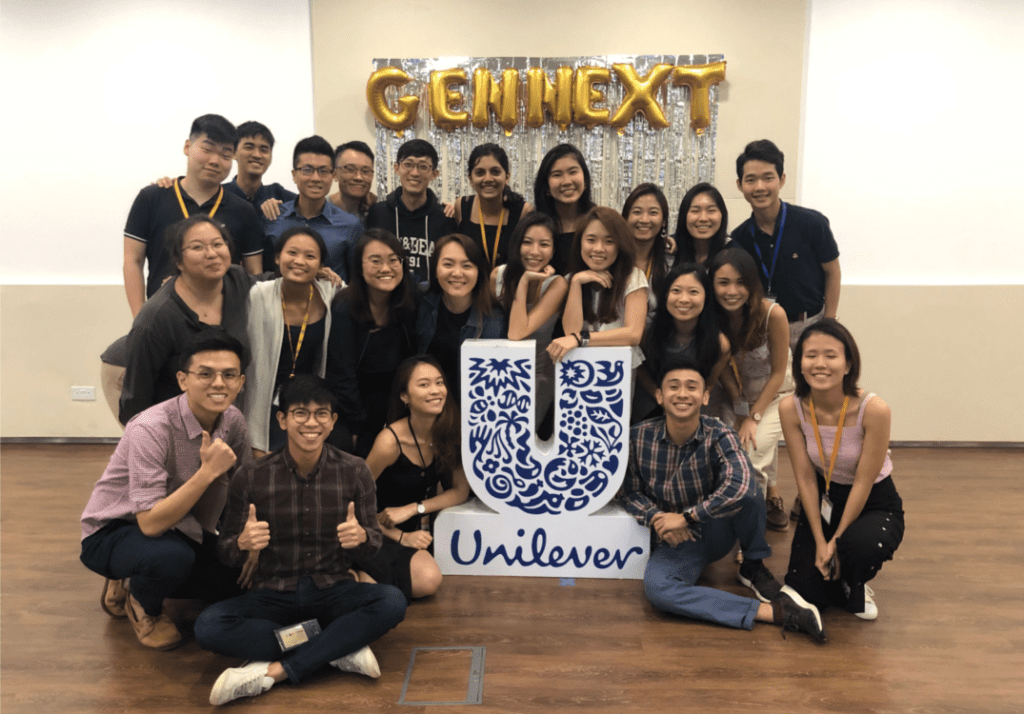Key Takeaways
- Define and Refine: Uncover the essence of Employee Value Proposition (EVP) – a tool not just for talent acquisition but a philosophy shaping workplace culture. Define and refine your EVP to attract and retain top talent.
- Strategic Integration: Seamlessly integrate EVP into your employer branding strategies and recruitment efforts. Craft compelling narratives, engage with candidates, and showcase your organization’s unique identity to build a winning employer brand.
- Future-Proof Your Workplace: Stay ahead in the evolving landscape with trends like holistic well-being, flexibility, and technology integration. Future-proof your organization by adapting your EVP to meet the dynamic expectations of tomorrow’s workforce.
Welcome to our in-depth exploration of the cornerstone of modern HR strategy: the Employee Value Proposition (EVP).
In a dynamic and competitive job market, understanding, defining, and effectively implementing your organization’s EVP has become pivotal to attracting, retaining, and engaging top-tier talent.

In this comprehensive guide, we will unravel the layers of Employee Value Proposition, delving into its core components, the strategic role it plays in talent acquisition, and offering a step-by-step roadmap for crafting a compelling EVP tailored to your unique organizational identity.
Whether you’re a seasoned HR professional seeking to enhance your recruitment strategies or a business leader aiming to fortify your employer brand, this guide is your go-to resource for navigating the intricate landscape of EVP.
The Essence of Employee Value Proposition (EVP)
At its essence, an Employee Value Proposition encapsulates the unique set of benefits and values that an organization promises to deliver to its employees.
It goes beyond the traditional realms of compensation and benefits, encompassing factors such as career development opportunities, company culture, work-life balance, and recognition—a holistic approach designed to create a workplace environment that resonates with and attracts top-tier talent.
Why EVP Matters in the Modern Workplace
In today’s fast-paced and ever-evolving professional landscape, attracting and retaining skilled professionals goes beyond offering a competitive salary.
Job seekers are increasingly discerning, seeking organizations that align with their values, provide opportunities for growth, and foster a positive work culture.
This paradigm shift has elevated the significance of EVP as a powerful tool for organizations striving not just to fill positions but to build a dedicated and motivated workforce.
Navigating the Complete Guide
This comprehensive guide is structured to provide you with a thorough understanding of EVP, starting with its foundational elements and progressing through practical insights into its strategic implementation.
From defining EVP and understanding its core components to exploring real-world examples of successful EVPs, we leave no stone unturned.
Who Can Benefit from This Guide?
Whether you’re an HR professional, a business owner, or a leader responsible for shaping your company’s identity, this guide is tailored to meet your needs.
We’ve designed it to be a valuable resource for those looking to enhance their recruitment strategies, strengthen their employer brand, and align their organization with the expectations of the modern workforce.
Join us on this enlightening journey through the intricate world of Employee Value Proposition—a journey that promises to empower you with the knowledge and tools needed to create a workplace that not only attracts top talent but retains and nurtures it for long-term success.
Let’s embark on this exploration together, shaping the future of your organization through the lens of a compelling EVP.
Before we venture further into this article, we like to share who we are and what we do.
About 9cv9
9cv9 is a business tech startup based in Singapore and Asia with a strong presence all over the world.
With over seven years of startup and business experience, and being highly involved in connecting with thousands of companies and startups, the 9cv9 team has listed some important learning points in this overview of What is Employee Value Proposition (EVP).
If your company needs recruitment and headhunting services to hire top employees, you can use 9cv9 headhunting and recruitment services to hire top talents and candidates. Find out more here, or send over an email to [email protected].
Or just post 1 free job posting here at 9cv9 Hiring Portal in under 10 minutes.
What is Employee Value Proposition (EVP): A Complete Guide
- Understanding Employee Value Proposition (EVP)
- The Role of EVP in Talent Acquisition
- Crafting a Compelling Employee Value Proposition (EVP)
- Measuring the Impact: KPIs for Evaluating EVP
- Building a Winning Employer Brand with EV
- Future Trends in Employee Value Proposition (EVP)
1. Understanding Employee Value Proposition (EVP)
Unlocking the secrets of Employee Value Proposition (EVP) is fundamental to building a workplace that not only attracts top talent but also fosters long-term employee engagement and satisfaction.
In this section, we’ll delve deep into the core components of EVP, exploring how each element contributes to creating a compelling and competitive employer brand.

Core Components of EVP
- Compensation and Benefits
- EVP begins with a competitive salary structure and comprehensive benefits package.
- Example: Google’s EVP includes not just monetary rewards but also unique perks like on-site wellness and childcare facilities, emphasizing a holistic approach to employee well-being.
- Career Development Opportunities
- Highlighting opportunities for growth and advancement is crucial for attracting ambitious professionals.
- Example: LinkedIn’s EVP focuses on continuous learning and skill development, offering employees access to extensive training resources and mentorship programs.
- Company Culture and Values
- Communicating a strong organizational culture and values fosters a sense of belonging among employees.
- Example: Zappos is renowned for its vibrant company culture, emphasizing core values like delivering “WOW” through service, creating a workplace where employees are encouraged to bring their authentic selves to work.
- Work-Life Balance
- Emphasizing work-life balance showcases a commitment to employee well-being and contributes to a positive workplace environment.
- Example: Buffer, a fully remote company, champions work-life balance through flexible schedules, unlimited paid time off, and remote work opportunities.
- Recognition and Rewards
- Acknowledging and rewarding employee contributions enhances job satisfaction and reinforces a positive workplace culture.
- Example: Salesforce incorporates a robust recognition program, including peer-to-peer recognition and various awards, promoting a culture of appreciation.
The Strategic Role of EVP in Talent Acquisition
- Attracting Top Talent with a Strong EVP
- A well-defined EVP is a magnet for top-tier talent, setting your organization apart from competitors.
- Example: Apple’s EVP focuses on innovation and creativity, attracting individuals who align with the company’s commitment to pushing boundaries.
- Aligning EVP with Recruitment Strategies
- Integrating EVP into job descriptions, recruitment materials, and interview processes ensures consistency in messaging.
- Example: Microsoft aligns its EVP with its mission, emphasizing a growth mindset and a commitment to making a positive impact on the world.
- Case Studies: Successful EVP Implementation in Hiring
- Examining real-world examples provides valuable insights into effective EVP-driven recruitment strategies.
- Example: IBM’s successful EVP implementation involves showcasing a diverse and inclusive workplace, attracting talent that values these principles.

In conclusion, understanding the multifaceted nature of Employee Value Proposition is the foundation for creating a workplace that not only attracts top talent but also cultivates a culture of engagement and growth. By dissecting the core components and exploring real-world examples, organizations can refine their EVP, positioning themselves as employers of choice in a competitive landscape.
2. The Role of EVP in Talent Acquisition
Understanding the pivotal role of Employee Value Proposition (EVP) in talent acquisition is crucial for organizations seeking to attract, recruit, and retain top-tier talent.
This section explores how a well-defined EVP becomes a strategic tool in the talent acquisition process, influencing candidates’ perceptions and decisions.
Attracting Top Talent with a Strong EVP
- Positioning Your Organization as an Employer of Choice
- A compelling EVP sets the stage for attracting top talent by showcasing the unique benefits and values offered.
- Example: Meta’s EVP emphasizes a culture of innovation, collaboration, and impact, positioning the company as an attractive destination for tech talent.
- Aligning with Candidate Expectations
- Understanding candidate priorities and aligning your EVP with those expectations enhances its appeal.
- Example: Salesforce’s EVP resonates with candidates seeking purposeful work, emphasizing the company’s commitment to making a positive impact on the world.

Aligning EVP with Recruitment Strategies
- Consistent Messaging Across Recruitment Materials
- Integrating EVP into job descriptions, career pages, and recruitment materials ensures a consistent message.
- Example: Google incorporates its EVP into job listings, showcasing not just the job requirements but also the unique aspects of its workplace culture.
- EVP-Driven Interview Processes
- Aligning interview questions and assessments with EVP elements helps evaluate candidates who resonate with your organizational values.
- Example: LinkedIn’s recruitment process incorporates questions that assess a candidate’s alignment with the company’s emphasis on continuous learning and professional growth.
- Leveraging Social Media for EVP Communication
- Utilizing social media platforms to communicate EVP highlights enhances brand visibility and attracts candidates who align with your values.
- Example: X (formerly known as Twitter)’s social media presence reflects its EVP, emphasizing a dynamic and inclusive workplace, and attracting candidates who value these principles.

Case Studies: Successful EVP Implementation in Hiring
- IBM: Diversity and Inclusion
- IBM’s EVP showcases a commitment to diversity and inclusion, attracting candidates who prioritize working in a diverse and collaborative environment.
- Microsoft: Growth Mindset
- Microsoft’s EVP aligns with a growth mindset, appealing to candidates who are driven by continuous learning and a passion for innovation.
- Amazon: Customer-Centric Culture
- Amazon’s EVP emphasizes its customer-centric culture, attracting candidates who are aligned with the company’s focus on customer satisfaction and innovation.

In essence, the role of EVP in talent acquisition extends beyond attracting candidates; it sets the foundation for a successful employer-employee relationship.
By strategically aligning EVP with recruitment strategies and learning from successful case studies, organizations can not only attract top talent but also foster a workforce that resonates with and contributes to the company’s mission and values.
3. Crafting a Compelling Employee Value Proposition (EVP)
Crafting an effective Employee Value Proposition (EVP) is an art that involves understanding your organization’s unique identity, values, and the aspirations of your workforce.
In this section, we’ll explore the step-by-step process of creating a compelling EVP, drawing insights from successful examples in the business landscape.
Step-by-Step Guide to Define EVP
- Conducting Internal Research
- Understand the perspectives of existing employees through surveys, interviews, and focus groups.
- Example: Adobe gathered employee feedback to shape its EVP, emphasizing creativity, innovation, and a supportive work environment.
- Identifying Core Values and Culture
- Define the fundamental values that drive your organization and contribute to its unique culture.
- Example: HubSpot aligns its EVP with a culture of transparency, autonomy, and a commitment to personal and professional growth.
- Assessing Employee Needs and Expectations
- Identify the needs and expectations of your workforce, considering factors like work-life balance, career development, and recognition.
- Example: Cisco focuses on employee well-being in its EVP, offering flexible work arrangements and comprehensive wellness programs.

Tailoring EVP to Your Company’s Unique Identity
- Showcasing Unique Selling Points
- Highlight what makes your organization stand out from competitors in terms of workplace culture, benefits, and opportunities.
- Example: Netflix emphasizes a culture of freedom and responsibility in its EVP, attracting employees who thrive in a dynamic and innovative environment.
- Aligning with Organizational Goals and Mission
- Ensure that your EVP aligns with your company’s overall mission and long-term objectives.
- Example: Tesla’s EVP aligns with its mission of accelerating the world’s transition to sustainable energy, attracting employees passionate about environmental sustainability.
- Creating a Compelling Employee Value Proposition Statement
- Summarize your EVP in a concise and impactful statement that resonates with both current and potential employees.
- Example: Starbucks encapsulates its EVP in the statement “To inspire and nurture the human spirit – one person, one cup, and one neighborhood at a time.”

Involving Employees in EVP Development
- Collaborative Workshops and Brainstorming Sessions
- Include employees from various levels and departments in the EVP development process.
- Example: Microsoft conducts workshops involving employees to gather diverse perspectives, ensuring the EVP reflects a shared vision.
- Feedback Mechanisms for Continuous Improvement
- Establish channels for ongoing feedback to adapt the EVP based on changing employee needs and industry trends.
- Example: Unilever regularly gathers feedback through surveys and focus groups, refining its EVP to stay relevant in a rapidly evolving market.
- Employee Testimonials and Success Stories
- Incorporate real stories from employees who exemplify the positive aspects of your EVP.
- Example: Facebook shares employee testimonials on its careers page, providing authentic insights into the employee experience and reinforcing the EVP.

In conclusion, crafting a compelling Employee Value Proposition is a dynamic and collaborative process that requires a deep understanding of organizational values and employee expectations.
By following a systematic approach, tailoring the EVP to your company’s unique identity, and involving employees in the development process, you can create a powerful tool that attracts, retains, and motivates top talent.
4. Measuring the Impact: KPIs for Evaluating Employee Value Proposition (EVP)
Measuring the impact of your Employee Value Proposition (EVP) is essential to gauge its effectiveness in attracting, retaining, and engaging top talent.
In this section, we’ll explore key performance indicators (KPIs) that organizations can use to assess the success of their EVP initiatives, along with relevant examples from industry leaders.
Key Performance Indicators (KPIs) to Track EVP Success
- Employee Satisfaction Surveys
- KPI: Percentage increase in overall employee satisfaction scores.
- Example: Google uses regular surveys to measure employee satisfaction, allowing the company to track improvements and identify areas for enhancement in its EVP.
- Employee Retention Rates
- KPI: Reduction in turnover rates and an increase in employee retention.
- Example: Microsoft monitors retention rates to assess the effectiveness of its EVP, aiming to retain top talent and reduce the costs associated with turnover.
- Recruitment Metrics
- KPI: Increase in the number of qualified applicants and a decrease in time-to-fill positions.
- Example: IBM analyzes recruitment metrics, such as the quality of applicants and time-to-fill, to measure the impact of its EVP on attracting the right talent efficiently.

Analyzing Employee Engagement Metrics
- Employee Engagement Surveys
- KPI: Improvement in engagement scores and participation rates.
- Example: Salesforce regularly conducts employee engagement surveys to understand how well its EVP aligns with employee expectations and contributes to a positive workplace culture.
- Participation in Training and Development Programs
- KPI: Increase in employee participation in learning and development initiatives.
- Example: Amazon uses training program participation rates as a KPI to assess the appeal of its EVP, emphasizing continuous learning and professional growth.
- Recognition and Rewards Program Engagement
- KPI: Growth in the participation and utilization of recognition and rewards programs.
- Example: Adobe measures the impact of its EVP by analyzing employee engagement with recognition and rewards programs, indicating the success of its efforts to foster a positive workplace culture.
Using Surveys and Feedback for Continuous Improvement
- Exit Interview Feedback
- KPI: Reduction in EVP-related concerns cited in exit interviews.
- Example: Tesla leverages exit interviews to gather feedback on its EVP, allowing the company to make strategic adjustments and address any areas of dissatisfaction.
- Anonymous Feedback Platforms
- KPI: Increase in positive feedback and suggestions for EVP improvement.
- Example: Facebook utilizes anonymous feedback platforms to collect insights from employees, enabling the organization to continuously refine its EVP based on real-time feedback.
- Comparative Benchmarking
- KPI: Positive rankings in employer benchmarking studies.
- Example: HubSpot assesses its EVP success by participating in industry benchmarking studies, comparing its rankings to competitors and striving for continuous improvement.
In summary, tracking a comprehensive set of KPIs allows organizations to evaluate the impact of their Employee Value Proposition effectively.
By regularly measuring employee satisfaction, retention rates, engagement metrics, and leveraging feedback for continuous improvement, companies can refine their EVP strategies to remain competitive and appealing in the ever-evolving job market.
5. Building a Winning Employer Brand with Employee Value Proposition (EVP)
Creating a strong Employer Brand is intricately linked to the effectiveness of your Employee Value Proposition (EVP).
In this section, we will explore the symbiotic relationship between EVP and Employer Brand, providing actionable insights and examples from industry leaders on how to build a compelling narrative that attracts top talent and enhances your organization’s reputation.
Integrating EVP into Employer Branding Strategies
- Consistent Messaging Across Platforms
- Action: Ensure that the key elements of your EVP are consistently communicated on your company’s website, social media channels, and recruitment materials.
- Example: LinkedIn aligns its EVP with its employer branding, communicating a commitment to professional growth and a collaborative work environment across all platforms.
- Crafting Engaging Employer Branding Content
- Action: Develop content that highlights real employee stories, testimonials, and day-in-the-life features to showcase the authentic experience of working for your organization.
- Example: IBM’s career blog shares employee experiences and achievements, providing a transparent and authentic portrayal of its EVP in action.
- Leveraging Visual Content to Showcase EVP Elements
- Action: Use visually compelling elements such as videos, infographics, and images to represent key aspects of your EVP, making it more accessible and memorable for potential candidates.
- Example: Microsoft’s recruitment videos creatively showcase its EVP elements, including a dynamic workplace and opportunities for innovation.
Showcasing EVP in Recruitment Marketing
- Tailoring Job Descriptions to Reflect EVP
- Action: Infuse your job descriptions with language that reflects the values and opportunities highlighted in your EVP.
- Example: Salesforce incorporates EVP elements in job listings, emphasizing the company’s commitment to social responsibility and innovation.
- Utilizing Social Media as a Recruitment Tool
- Action: Leverage social media platforms to share EVP-related content, engage with potential candidates, and humanize your employer brand.
- Example: Google’s careers Instagram showcases behind-the-scenes moments, employee spotlights, and EVP highlights, creating an engaging narrative.
- Participating in Employer Branding Awards and Recognitions
- Action: Seek opportunities to participate in employer branding awards to gain external validation and showcase your organization’s commitment to a strong EVP.
- Example: HubSpot has been consistently recognized in “Best Places to Work” lists, reinforcing its employer brand and EVP in the eyes of potential candidates.

Enhancing Company Reputation Through a Strong EVP
- Monitoring Online Employer Brand Reputation
- Action: Regularly monitor online reviews, testimonials, and ratings on employer review platforms to address concerns and showcase positive EVP-related experiences.
- Example: Amazon actively manages its online employer reputation, responding to reviews and showcasing initiatives that align with its EVP.
- Engaging Employees as Brand Ambassadors
- Action: Encourage employees to become brand ambassadors, sharing their positive experiences and insights on social media or through employee advocacy programs.
- Example: Facebook’s employee advocacy program empowers employees to share their perspectives, contributing to a positive employer brand and reinforcing the company’s EVP.
- Aligning Corporate Social Responsibility (CSR) Initiatives with EVP
- Action: Showcase how your organization’s CSR initiatives align with the values embedded in your EVP, contributing to a positive reputation.
- Example: Tesla’s sustainability efforts are closely tied to its EVP, creating a positive association between the company’s environmental initiatives and its employer brand.
Building a winning employer brand with EVP involves a strategic and integrated approach.
By consistently integrating EVP into employer branding strategies, showcasing it in recruitment marketing efforts, and enhancing company reputation through a strong EVP, organizations can create a compelling narrative that resonates with top talent and strengthens their position as an employer of choice.
6. Future Trends in Employee Value Proposition (EVP)
As the workforce landscape continues to evolve, staying ahead of the curve is crucial for organizations aiming to attract and retain top talent.
In this section, we’ll explore emerging trends in Employee Value Proposition (EVP) that are shaping the future of workplace dynamics, with insights and examples from industry leaders.
Evolving Landscape of Employee Expectations
- Holistic Well-Being Programs
- Trend: Integrating comprehensive well-being programs into EVP to address employees’ physical, mental, and financial health.
- Example: Johnson & Johnson emphasizes well-being in its EVP, offering a range of programs focused on health, family support, and work-life balance.
- Emphasis on Diversity, Equity, and Inclusion (DEI)
- Trend: Inclusion of robust DEI initiatives in EVP to create a diverse and equitable workplace.
- Example: Cisco’s EVP includes a commitment to diversity and inclusion, actively fostering an environment where employees from diverse backgrounds feel valued and included.
- Flexibility and Remote Work Options
- Trend: Recognizing the importance of flexible work arrangements and remote options in shaping EVP to meet the changing expectations of the workforce.
- Example: Twitter incorporates flexibility in its EVP, allowing employees to choose their work location, whether in an office or remotely.

Incorporating Flexibility and Remote Work in EVP
- Hybrid Work Models
- Trend: Implementation of hybrid work models, allowing employees to work both remotely and in the office.
- Example: Microsoft embraces a hybrid work model, providing employees with flexibility while maintaining collaboration through a combination of remote and in-person work.
- Digital Well-Being Support
- Trend: Addressing the impact of digital overload by integrating digital well-being initiatives into EVP.
- Example: Google’s EVP includes digital well-being support, encouraging employees to find a healthy balance between work and personal life.
- Customization of Benefits Packages
- Trend: Personalizing benefits packages within the EVP to cater to individual employee needs and preferences.
- Example: Salesforce offers a range of customizable benefits, allowing employees to tailor their packages based on their unique requirements.

Staying Ahead of Industry Changes with EVP Adaptations
- Agile and Adaptable EVP Frameworks
- Trend: Developing EVP frameworks that are agile and adaptable to quickly respond to industry changes and employee expectations.
- Example: Amazon continuously evolves its EVP, staying responsive to shifts in the retail and technology landscapes.
- Emphasis on Continuous Learning and Upskilling
- Trend: Integrating continuous learning opportunities and upskilling initiatives into EVP to foster professional growth.
- Example: LinkedIn’s EVP highlights a commitment to continuous learning, providing employees with access to a variety of training resources.
- Technology Integration in EVP
- Trend: Leveraging technology to enhance employee experiences and interactions within the EVP.
- Example: Apple’s EVP incorporates cutting-edge technology not just in its products but also in its workplace, aligning with the expectations of tech-savvy employees.
Future-Proofing Your Organization with a Robust EVP
- Environmental Sustainability Initiatives
- Trend: Integrating environmental sustainability initiatives into EVP to attract employees who value corporate responsibility.
- Example: Tesla’s EVP aligns with its commitment to sustainability, attracting employees passionate about contributing to a greener future.
- Emotional Well-Being and Mental Health Support
- Trend: Prioritizing emotional well-being and mental health support within EVP, recognizing the importance of holistic employee health.
- Example: Facebook places a strong emphasis on mental health support in its EVP, providing resources and programs to support employees’ emotional well-being.
- Enhanced Employee Experience Through Technology
- Trend: Using technology to enhance the overall employee experience, from onboarding to day-to-day work interactions.
- Example: HubSpot integrates technology into its EVP, creating a seamless and engaging employee experience through digital tools and platforms.
The future trends in Employee Value Proposition are dynamic and reflective of the evolving needs and expectations of the workforce.
By embracing holistic well-being programs, incorporating flexibility and remote work options, staying agile in EVP frameworks, and aligning with environmental sustainability, organizations can future-proof their EVP to attract, engage, and retain top talent in the ever-changing landscape of work.
Conclusion
In the expansive landscape of modern human resources, the significance of Employee Value Proposition (EVP) stands as a guiding beacon for organizations aspiring to not just hire, but to cultivate a thriving and engaged workforce.
Throughout this comprehensive guide, we’ve navigated the intricate realms of EVP, uncovering its definition, core components, strategic role in talent acquisition, and the art of crafting a compelling narrative.
As we conclude this journey, it becomes evident that EVP isn’t merely a concept; it’s a strategic imperative that shapes the very fabric of successful organizations.
Reflecting on the Essence of EVP
At its core, EVP encapsulates the unique set of values, benefits, and experiences that an organization promises to deliver to its employees.
It’s a promise that extends beyond the realms of a paycheck, encompassing career development, company culture, work-life balance, and recognition—a holistic commitment that resonates with the aspirations and expectations of the modern workforce.
The Strategic Power of EVP in Talent Acquisition
Our exploration into the strategic role of EVP in talent acquisition revealed its transformative impact on attracting top talent.
In a landscape where job seekers are discerning and value-driven, organizations with a well-defined EVP gain a competitive edge.
The ability to align EVP with recruitment strategies, showcase it in job descriptions, and leverage it in interviews becomes the cornerstone for building a workforce that not only fills positions but aligns with the organization’s mission and values.
Crafting a Compelling EVP: The Art and Science
Crafting a compelling EVP is an art and science that involves a meticulous understanding of organizational values, employee expectations, and the pulse of the industry.
By conducting internal research, identifying core values, and involving employees in the development process, organizations can create an EVP that goes beyond rhetoric—it becomes a lived experience for every individual contributing to the company’s success.
Measuring Success: KPIs and Continuous Improvement
The measurement of EVP success is not a one-time affair but an ongoing process.
Through a careful selection of Key Performance Indicators (KPIs), organizations can gauge employee satisfaction, retention rates, and engagement levels.
By incorporating feedback mechanisms and embracing continuous improvement, organizations ensure that their EVP remains adaptive and responsive to the evolving needs of their workforce.
Building a Winning Employer Brand: A Symphony of EVP and Branding
In the quest to attract and retain top talent, the fusion of EVP and employer branding emerges as a powerful symphony.
Through consistent messaging, engaging content, and leveraging visual elements, organizations can build a compelling employer brand that resonates not only with potential candidates but also with their existing workforce.
The integration of EVP into recruitment marketing strategies and active participation in employer branding awards becomes the cornerstone of a brand that stands out in a competitive marketplace.
Future Trends: Navigating Tomorrow’s Workforce Landscape
As we peer into the future, the landscape of EVP evolves to meet the dynamic expectations of the workforce.
Trends such as holistic well-being programs, flexibility and remote work options, and technology integration are reshaping the EVP landscape.
Organizations that embrace these trends not only future-proof their EVP but also position themselves as forward-thinking employers in the eyes of prospective talent.
Embarking on a Transformative Journey
In essence, Employee Value Proposition is more than a concept—it’s a transformative journey that organizations embark upon to shape their culture, attract the right talent, and foster an environment where individuals can thrive.
As we conclude this comprehensive guide, it is evident that the journey doesn’t end here; it’s a continual process of refinement, adaptation, and alignment with the ever-changing dynamics of the workforce.
As you navigate the realms of EVP within your organization, remember that it’s not just a tool for talent acquisition; it’s a philosophy that permeates every facet of your workplace.
From the moment a potential candidate encounters your employer brand to the day an employee reflects on their journey within the organization, EVP is the guiding force that shapes perceptions, fosters engagement, and ultimately contributes to the success of your organization.
So, whether you’re a seasoned HR professional, a business leader shaping organizational identity, or an employee curious about the essence of your workplace, let the principles of Employee Value Proposition guide your path.
In the tapestry of organizational success, EVP isn’t just a thread—it’s the vibrant hue that defines the masterpiece.
If your company needs HR, hiring, or corporate services, you can use 9cv9 hiring and recruitment services. Book a consultation slot here, or send over an email to [email protected].
If you find this article useful, why not share it with your hiring manager and C-level suite friends and also leave a nice comment below?
We, at the 9cv9 Research Team, strive to bring the latest and most meaningful data, guides, and statistics to your doorstep.
To get access to top-quality guides, click over to 9cv9 Blog.
People Also Ask
What is the employee value proposition?
The Employee Value Proposition (EVP) is the unique set of benefits and values that an organization promises to provide its employees. It extends beyond traditional compensation, encompassing aspects like career development, work culture, and recognition, creating a compelling reason for talent to join and stay with the company.
What are the 5 pillars of EVP?
The 5 pillars of Employee Value Proposition (EVP) typically include Compensation & Benefits, Career Development, Company Culture & Values, Work-Life Balance, and Recognition & Rewards. These elements collectively shape the unique value and experience an organization offers to its employees.
What is the EVP strategy?
The EVP strategy involves defining and communicating the unique value an organization offers to its employees. It includes aligning company values with employee expectations, emphasizing benefits beyond salary, and strategically showcasing these elements to attract, retain, and engage top talent.































![Writing A Good CV [6 Tips To Improve Your CV] 6 Tips To Improve Your CV](https://blog.9cv9.com/wp-content/uploads/2020/06/2020-06-02-2-100x70.png)


